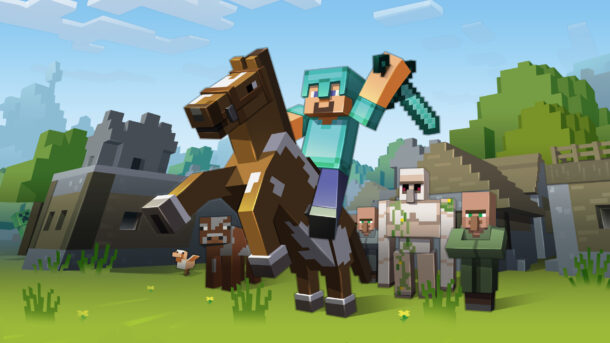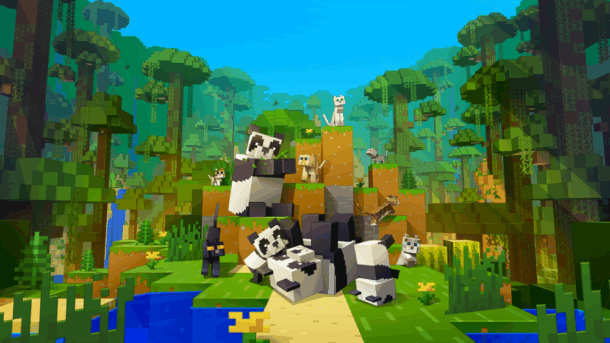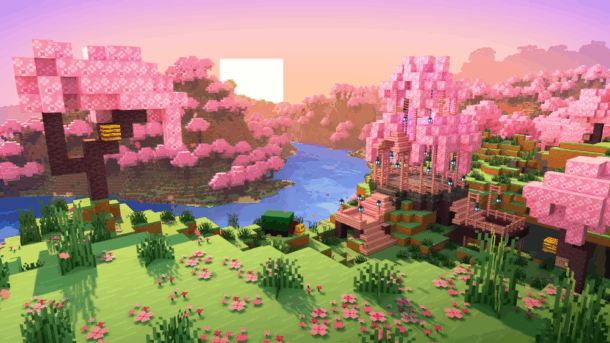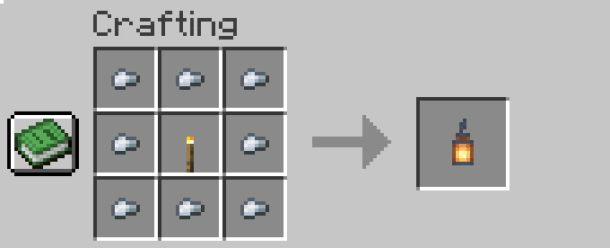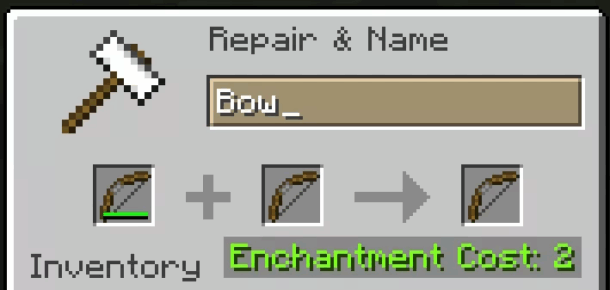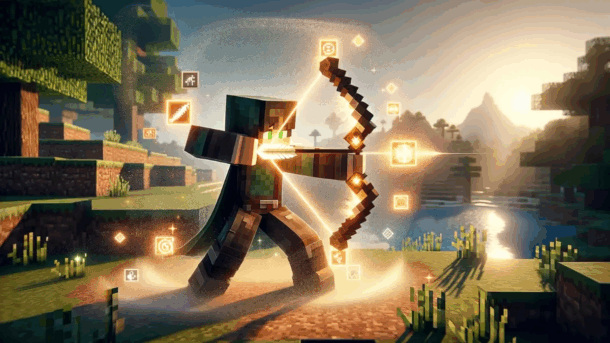Video Games
Unlocking League Lethality: Strategies and Insights
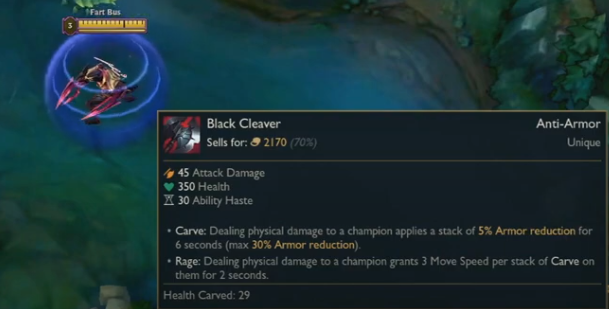
Lethality is one of the best strategic tactics used in League of Legends to counter your enemies and move forward. But how do you find Lethality in League of Legends, and how do you work with it?
Keep reading this article to learn everything you need to know about League Lethality and improve your gameplay in League of Legends.
What is Lethality in League Of Legends?
League Lethality is one of the key crucial stats that all players look for. It helps to optimize the damage output against opponents in combat. You also require minimal armor investment in this. Basically League lethality is like armor penetration that targets your enemy and reduces their armor level.
One would wonder why is this stat so important and what sets it apart? The difference in Lethality and normal armor penetration is that league lethality scales down the armor level based on the opponent’s champion level. This means that the stat is effective throughout the entire gameplay, so no matter what your attack remains potent against your opponent.
This is particularly helpful when attacking more vulnerable enemies. It changes the trajectory of your game progress and ensures that you achieve victory.

Also Read: How To Check Your League Of Legends MMR System?
Lethality vs. Armor Penetration
In the League of Legends, there are two different kinds of game mechanics that matter. They affect how well damage is done to enemies with armor.
As a function, lethality scales so as to drop an opponent’s armor scale down by their level. This effect increases the amount of lethality as one progresses during the match mostly in early and mid stages.
On the other hand, armor penetration cuts off a certain percentage of an enemy’s armor regardless of their rank. In this sense it is always impactful throughout the game especially on heroes who have acquired huge amounts of armor.
These disparities must be considered when forming strategies and choosing items that can be used against League of Legends’ characters with high defense powers.
When Should You Build Your Lethality?
Building League Lethality is a strategic thought, here are some moments when you should consider building your Lethality stat.
- Early Game Dominance: Lethality is particularly effective early or in the mid of the game, amplifying damage output when needed the most.
- Opponent Vulnerability: If the team you face has a significant low armor, lethality will help in serving devastating blows.
- Sustainability for your Champion: Assassins and AD carries, whose abilities benefit from physical damage scaling, are prime candidates for lethality builds.
- Strategic Objectives: For map control and ambushes like for those items in the Umbral Gaive, lethality is essential.
- Game Duration Strategy: If you want to conclude a match swiftly or you’re anticipating a quick game, lethality helps a lot.
Also Read: Best League Players of all Time: League of Legends
How Is Lethality Calculated?
The effectiveness of the League Lethality stat is calculated based on the player’s armor champion level. The formula for Flat Armor Penetration is basically the Lethality multiplied into a summation. The math for it looks something like this: Flat Armor Penetration = Lethality × (0.6 + 0.4 × level ÷ 18).
This means that at Level 1, lethality grants 60% of the total value of armor penetration. This percentage goes up by a lot in the linear scale when it reaches 100% which is somewhere around level 18.
Thus, due to this, the impact of lethality on reducing the enemy armor keeps growing as the player advances in level, making it a stat that is progressing through the game. This formula is critical to time the purchases you make of items effectively and then maximize your damage output.
List of Lethality Items
Items in League of Legends that provide lethality range from nearly all:
Duskblade of Draktharr: This is an item that provides lethality and a passive that deals bonus damage after becoming unseen by an enemy, which fits perfectly with ambush tactics.
Youmuu’s Ghostblade: Known for this item giving movement speed, Youmuu’s increases lethality and movement speed, making it perfect for those Champions dependent on quick positioning.
Edge of Night: This item deals lethality, provides a spell shield, and hence serves as both offense and defense combined—therefore useful for high-risk engagements.
Serpent’s Fang: Targets teams with shielding abilities; it reduces enemy shield effectiveness while providing lethality.
Umbral Glaive: A vision-control item that is key to detecting and destroying enemy wards, it also provides lethality.
Serylda’s Grudge: Primarily armor penetration, with a dash of lethality. It is powerful against the heavily armored.
Such items, modulating a mix of playstyles and strategic needs, hence would require readjustments in builds to counter certain threat expressions or reinforce synergy in team combat effectiveness.
Also Read: 699+ League of Legends Funny Names
How To Counter League Lethality?
League of Legends lethality counters lie in the realms of itemization and gameplay. First of all, armor up with items like Thornmail or Randuin’s Omen; these will cut down damage from lethality-dependent champions to a large extent. Items that provide an avenue for gaining health are also quite effective, for lethality does not scale with the target’s health, making a high-health champion easier to survive lethal bursts.
It’s all about positioning in terms of game play. Let the tanks take the primary lethality shots by being the front liners, or use positioning to take minimal damage in team fights. Don’t win a lone skirmish against lethality-focused champions; stay with your team.
Defense is important early in the game because spikes of lethality occur with levels. So, play safe early stages of the game to not get those lethality spikes. Control vision through warding against high-lethality champions to not get jumped. This is what doesn’t only protect your team but gets an overview of strategy.
Also Read: How Long Is a League of Legends Game?
Wrapping Up
Now that you know how to build League Lethality, its needs and even how to counter it if you ever face it, we believe you are ready for another round of playing League of Legends. And for all the times that you get stuck again in your progress, come back to us for fresh updates, hacks and tricks to becoming a master at playing League of Legends!
Video Games
Minecraft Day Length: Understanding the Basics

Okay, so picture this. You are so locked in on your Minecraft quest, building your dream castle or mining for diamonds, and suddenly nightfall sneaks upon you, breaking your flow. Moments like these often make the gamers wonder, How long is a Minecraft day? This day-night cycle is very important in the game and often determines important bits of the game, such as when mobs spawn, how to plan your farming, and even how far you can go from your base.
Don’t worry, we have all of it covered for you in this guide. Breaking down when a Minecraft day ends to how the time cycle works and translates into the real world.
What Is a Minecraft Day?
A 24-hour Minecraft day in the game consists of sunrise, daytime, sunset, and nighttime. No,w a full day in the game is equivalent ot only 20 minutes in actual real-world time. What this means is:
- 10 minutes of daylight (safe exploration and farming time)
- 7 minutes of nighttime (danger with hostile mobs)
- 1.5 minutes of dawn (sunrise)
- 1.5 minutes of dusk (sunset)
Understanding Minecraft’s Tick System
Now, Minecraft uses or measures time using ticks. In the game, one tick is equal to 1/20th of a second in real life. Therefore, 20 ticks means 1 second in real life. So, to count a full day in-game, you have 24,000 ticks.
This system is how commands, redstone, and even mods control the flow of time. When you see numbers like /time set 6000, those ticks correspond to specific moments of the day (in this case, noon).
Phases of a Minecraft Day
Each phase of the day looks different and influences how you play:
- Dawn (0–1000 ticks | 0:00–1:00 real minutes)
This is the point in the game when the sun is rising, and the mobs begin to burn. In short, the world is safe.
- Daytime (1000–12000 ticks | 1:00–10:00 real minutes)
The skies are bright, and you can farm, build things, or explore. Most mobs don’t spawn on the surface at this time.
- Dusk (12000–14000 ticks | 10:00–11:30 real minutes)
The skies turn orange at this stage, the light level drops, and mobs will prepare to spawn now.
- Nighttime (14000–22000 ticks | 11:30–18:30 real minutes)
Remember, darkness means danger. Mobs surface in the form of zombies, skeletons, spiders, and creepers.
- Midnight (18000 ticks | ~15 minutes in)
Now the moon is fully overhead at this stage and mob density will be at its peak.
- Late Night to Sunrise (22000–24000 ticks | 18:30–20:00 real minutes)
The cycle goes back to the first moment, mobs will burn and light will appear.
Real-Time Conversion of Minecraft Days
Because the game runs on a compressed schedule, it’s useful to see how real-world minutes translate into in-game hours.
| Real Time (Minutes:Seconds) | Minecraft Time | Event |
| 0:00 | 6:00 AM | Day begins (sunrise) |
| 0:23 | ~7:00 AM | Sunrise ends |
| 5:00 | 12:00 PM | Noon (sun overhead) |
| 9:41 | ~6:00 PM | Sunset begins |
| 10:28 | ~7:00 PM | Bedtime (safe sleep) |
| 11:32 | ~8:00 PM | Night begins |
| 15:00 | 12:00 AM | Midnight |
| 18:47 | ~5:30 AM | Sunrise starts |
| 19:06 | 6:00 AM | Dawn returns |
| 20:00 | 6:00 AM | Full cycle completed |
How to Change the Length of a Minecraft Day
Not all gamers prefer the default time cycle in Minecraft; some prefer longer days to get more time to build things, and then some prefer longer nights to fight mobs. Your ideal time can be set and customized by you in this manner:
Not everyone loves the default cycle. Sometimes you want longer days for building or longer nights for fighting mobs. Minecraft gives you several ways to customize time.
1. Using Commands
- Pause the cycle: /gamerule doDaylightCycle false
- Set exact times:
- /time set day → 6:00 AM
- /time set night → 6:00 PM
- /time set 6000 → Noon
- /time set 18000 → Midnight
- /time set day → 6:00 AM
- Add time manually: /time add <ticks>
2. Using Mods and Plugins
- Day Length (Modrinth): This mod syncs the Minecraft game time with how time flows in the real world.
- Custom Time Cycle (Modrinth): This hack lets you set the game day/night at different lengths.
3. Visual Adjustments
Resource packs can’t change time speed, but they can alter sun, moon, and sky textures for a more realistic feel.
The Role of the Day-Night Cycle in Gameplay
Minecraft’s time system isn’t just for immersion—it affects almost every gameplay decision.
Mob Spawning and Combat
- Hostile mobs spawn at light level ≤ 7.
- Creepers, skeletons, zombies, and spiders spawn at night.
- Spiders are neutral during the day but hostile at night.
- Endermen teleport away when exposed to sunlight.
Farming and Food Gathering
- Crops grow under light, not direct sun, so they keep growing at night if lit with torches.
- Daytime is safer for harvesting and breeding animals.
Building and Exploration
- Daytime = safety and progress.
- Nighttime = fortify bases or fight mobs.
- Redstone daylight detectors can automate farms and lamps.
Tracking Time in Minecraft
If you want to avoid being caught off guard by time changes in Minecraft, then there are easy ways to fix it. Firstly, you can craft a clock that will show you the Sun and Moon position. Some gamers also look at the sky as key. Here, the sun overhead would mean it is noon time, and the moon overhead means midnight.
You can use the /time query daytime for exact ticks. The Scoreboards and redstone counters automate time tracking, and the statistics menu helps to check how many days you have survived and played in the game. You can also debug your screen using the F3 key only in Java Edition) which shows you the exact day and ticks.
Survival Tips for Different Day Lengths
Depending on defaults or personalized time that you spend with, the following are some strategies:
Beds are lifesavers – Avoid long nights right now.
Bring a clock – Always know how much daylight is remaining.
Light up your structures – Keep mob spawns away from and around your base.
Stay in your quarters during nighttime – Utilize evenings to craft, smelt, and sort items.
Use cheats or mods – Adjust time for relaxed building or hardcore survival challenges.
Why Minecraft Day Length is Important
Learning about the Minecraft Day length is important to enhance the gaming experience. Based on whether you customize the time or not, you can schedule when to farm and when to explore during the day. While you can be prepared for mob threats and not be ambushed in the dark.
Based on the time of the day, you can figure out at which point you should start getting back home. Time customization also means you can build a redstone system with an internal sync for day-to-night detectors, creating automation basically. All these perks let you make fewer mistakes and see the Game Over screen a lot less.
Conclusion
Just 20 minutes in the real world, with 10 minutes of daylight, 7 of darkness, and 1.5 minutes each of dawn and dusk. But more than just marking time, this cycle dictates mob spawns, farming, exploration, and planning. Whether you’re playing with the vanilla options, freezing time with commands, or increasing days to hours with mods, learning the time system of Minecraft offers a big survival advantage. Next time the sun rises over your cube-like planet, you’ll have just a flat number of ticks before shadows descend. Make the most of it, because in Minecraft, every last tick counts.
Video Games
How to Make a Lantern in Minecraft: A Bright Crafting Guide

Lighting up your Minecraft world does not have to be bland or mundane. It is important to know how to craft lanterns in minecraft if your creations are warm and calming. Lanterns bring functionality and visual personality, unlike torches or glowstone blocks. Lamps bring a constant glow and softness and sprinkles personality to any set up. Does not matter if you are beautifying a small cottage, a scary street in a village, or a giant castle, lanterns will instantly add some life to the surroundings.
In this article, we will guide you step by step from collecting materials to making the lantern itself, we promise it will make your life easier. You not only will be aware of how to light up your Minecraft world, but how to do it in style!
Why Use Lanterns Instead of Other Light Sources?
Before we go on about how to make lanterns, let’s go over why they matter. Lanterns in Minecraft are unique for many reasons:
- They emit a light level of 15, which is the greatest and is equivalent to glowstone and sea lanterns.
- You can place it anywhere: on floors, on ceilings, or suspending them, which gives you more ways to beautify than torches or glowstone blocks do.
- They last long enough, too, and are permanent: when you place them, they don’t burn out or run out of fuel.
- They also have a nice appearance: their form and gentle glow can enhance the appearance of your builds.
Thanks to such benefits, lanterns are a favorite for lighting up pathways, homes, gardens, and piers, anywhere a bright, warm light is desired.
What Do You Need to Craft a Lantern?
To make lanterns in Minecraft, you need just a few materials:
- 8 iron nuggets
- 1 torch
(Optional) Glowstone dust — used in some versions or variants.
Iron nuggets are easy to get: You can easily get iron nuggets by melting iron ingots or iron ore, or by breaking an iron tool you don’t need.
Making a torch is also easy: you need to combine sticks with coal or charcoal.
In glowstone dust-permissive versions, such as for a better or a “glow lantern” version, putting it in can alter its brightness. Certain guides instruct using glowstone dust for brightness purposes.
Step-by-Step: Crafting a Lantern
Let’s go step by step:
Open the crafting table:
You require a 3×3 crafting grid (off a crafting table, not your 2×2 inventory).
Put the Torch at the Centre:
Place a torch at the very center cell of the 3×3 square. This is your center light source.
Surround the torch with iron nuggets:
Put one iron nugget inside each of the 8 perimeter grid cells around the center ones (excluding the center). This constitutes the perimeter for the torch.
(Optional) Add Glowstone Dust:
In editions that support it, you can also throw a pinch of glowstone dust to alter the lantern’s effects. The basic recipe works without it.
Retrieve the Lantern:
It will create a lantern object in the results window. Just drag it into your inventory.
Place the Lantern:
It is possible to place a lantern on top of a solid block, sitting nicely on the floor, hanging down from beneath a block, or secured in creative ways.
That’s it—you’ve just created a lantern for Minecraft!
How to Get Glowstone Dust (If Needed)
In case your version contains a glowstone-added lantern, this is how you obtain glowstone dust:
- Proceed to the Nether, dig for glowstone blocks. A single block yields 2–4 dust.
- Place a glowstone block in a crafting grid to convert it to 4 glowstone dust
- Witch killing also has a small chance to drop glowstone dust.
When you receive glowstone dust, place it in your lantern crafting setup (according to your version’s instructions).
Variants & Editions: Lantern vs. Soul Lantern
There also exists a soul lantern variant in some versions of Minecraft, using a soul torch instead of an ordinary torch. Crafting rules are the same: encapsulate the soul torch with iron nuggets. The soul lantern emits a blueish soul fire glimmer, which might come in useful for particular builds or employing soul-themed design. The majority of tutorials and lantern crafting guides include both.
Where to Place Lanterns & Creative Tips
Having a lantern is one thing — putting it to effective use is another. Below are ideas and suggestions for placement:
- Path Lighting: Mount lanterns or hang them on fence posts on paths. This provides a welcoming and safe path.
- Under Eaves & Ceilings: Suspend lanterns below overhangs or ceilings to create ambient lighting without filling floors.
- Inside Builds: Employ lanterns within rooms, hallways, stairwells to replace torches with more elegant light sources.
- Exterior Ornamentation: Employ lanterns on outdoors walls, porches, garden arches. They surround buildings with warm light.
- Spacing: Well-spaced lanterns 8–12 blocks apart tend to work well without overwhelming.
- Symmetry & Patterns: Create symmetrical patterns of lanterns on ceilings or walls to create a refined appearance.
- Layered Lighting: Pair with sea lanterns, glowstone, redstone lamps in multi-layered lighting schemes.
Common Mistakes & Troubleshooting
To be successful when building lanterns and employing them, look for these pitfalls:
- Leaving the center slot empty instead of placing the torch.
- Using full iron ingots instead of iron nuggets. The recipe strictly needs nuggets.
- Forgetting the crafting table (the 3×3 grid is essential).
- Trying to place a lantern in mid-air (needs a block surface or hanging block).
Version differences: Some editions or updates may change mechanics, so always check your Minecraft version.
Example Build Scenario
Let’s imagine you’re building a riverside dock:
- Craft multiple lanterns using the recipe above.
- Install fence posts along the dock edge.
- Suspend lanterns off fence posts or mount them on top.
- Install glowstone or sea lanterns under water surfaces to supplement overhead lighting.
- Pair with lanterns suspended under roof edges to lead visitors to doors.
This adds function (illumination) and style (attractive glow) to your dock.
Conclusion
For illuminating and decorating your Minecraft world, learning how to craft lanterns opens up plenty of possibilities for lighting and decorating your world. From placing the lanterns along the paths, piers and ceilings to crafting a beautiful lantern with iron nuggets, they are as useful as much as gorgeous.
Lanterns use up most of the light without burning out providing an inviting and cozy glow to any structure. Whether you are lighting up a village street, your own castle, dark cage, lanterns will not just beautify and guide your way, it will also transform your Minecraft experience into unforgettable lit spaces.
Video Games
Minecraft Bow Enchantments: Everything You Need to Know

As a gamer who enjoys whittling mobs down from a safe distance, the enchanted bow is your go-to companion. Yet, with all the enchantments existing, how do you pick the correct ones? In this guide, you will discover the top bow enchantments in Minecraft, how to apply them, as well as secrets on how to create your perfect ranged weapon.
Why Bow Enchantments Matter
A simple bow is okay at first, but when mobs get harder, enchantments let you:
- Deal more damage
- Add utility such as knockback or fire
- Make it last longer so your bow doesn’t break as easily
- Lower the cost of resources (arrows or repairs)
Selecting the proper combination can turn a humble bow into a monster! Below, we will cover every potential bow enchantment, and indicate which ones are must-haves and which are situational.
All Bow Enchantments (Java & Bedrock)
Here’s a list of all the enchantments that can be placed on a bow (in the latest versions) and what they do. Information from the Minecraft Wiki and recent community sources.
Note: You can’t put Infinity and Mending on the same bow together, they are incompatible.
Also, bows cannot receive enchantments such as Sharpness or Looting, they are melee- or other weapon-specific.
How to Enchant a Bow?
There are several ways to enchant a bow:
1. Enchantment Table
Place bookshelves around the table (preferably 15) and use Lapis Lazuli + XP levels to enchant. You’ll receive three random enchantment choices.
2. Anvil + Enchanted Book
Use a bow + enchanted book to blend an enchantment. This is where you achieve enchantments not available by the table or greater control over your enchantments.
3. Commands / Creative / Give / Loot
You can spawn bows that are already enchanted in non-survival modes, or you can loot chests and receive enchanted bows.
4. Merging with Another Bow / Book
You can combine two books or two enchanted bows in an Anvil in order to level up or apply new enchantments. However, the XP cost can become high.
Which Enchantments Are Best Bow Enchantments in Minecraft?
When one asks “best bow enchantments minecraft,” one generally wants a combination that provides the best all-around performance without too many trade-offs. Here’s what the majority of experienced players would advise (and why).
Essentials
- Power V
This is likely the one most useful enchantment. A bow that deals increased damage will need fewer shots fired on mobs.
- Unbreaking III
Durability is key. With Unbreaking, your bow will degrade much slower.
- Either Infinity I or Mending I (select one)
Infinity will allow you to shoot any number of arrows you want (as long as you have one arrow). Great for resource-saving.
Mending enables your bow to self-repair via XP orbs. Very useful for durability but you have to gather XP, and you will have to keep arrows in supply.
Players argue back and forth about which is better. Consensus? If arrow supply is convenient enough, go with Mending; if saving arrows is the priority, go Infinity.
Really Handy Add-ons (If You Have Space)
- Punch II
Provides knockback to push mobs away from you, handy when battling melee mobs.
- Flame I
Incinerates targets. Nice for added damage over time or crowd control. But watch out: arrows with Flame don’t apply additional fire damage in rain or when traveling through water.
- Avoid Curse of Vanishing
Unless you have a really excellent reason, this enchantment nearly always fails (losing your bow when you die).
Sample “Best Bow” Builds & Combos
These are some well-liked and useful combinations:
- PvP / Combat Build
Power V + Unbreaking III + Infinity I + Punch II
This build provides high damage, toughness, and free arrows—ideal for combat against mobs or other players. (Dropping Flame is commonly a good idea in PvP to prevent flame damage from obscuring sight.)
- Explorer / Longevity Build
Power V + Unbreaking III + Mending I + Flame I
You sacrifice infinite arrows for longevity and healing. Flame provides some added damage. Suitable if you are adventuring or don’t want to carry arrows.
- Utility / Crowd Control Build
Power V + Unbreaking III + Punch II + Flame I
More aimed at mob control in close proximity or burning damage applied over time.
In every build, Power V + Unbreaking III are the cornerstone , everything else is built off of that foundation.
Pro Tips & Tricks
- Farm Experience Efficiently
If you choose Mending, then you will require consistent XP on repairs. Farm XP through mob farms, smelting, or by trading.
- +Use a Grindstone Carefully
When you receive an undesirable enchant, you can strip all the enchantments (wasting XP) on a grindstone. Handy when you wish to re-roll better enchantments.
- Strategic Integration in Anvil
Books/bows combine at the expense of XP, and the “prior work penalty” boosts the price. Plans combine meticulously from least to greatest.
- Collect Backup Bows
Even with Mending, you will still, every now and then, desire a backup enchanted bow (or a second bow that has a subset of the enchantments) when on extremely prolonged quests from base.
- Rain & Water Caveats
- Flame effect is nullified in rain or water.
- Not compatible with tipped or spectrum arrows.
- Always be sure to carry one normal arrow when you carry Infinity.
- Do not combine Infinity + Mending
Since these can’t be combined, the two will either raise an error or just not be applied. Decide beforehand which one you want.
Common Mistakes & Misconceptions
- “More enchantments = better bow”
Not necessarily. Certain charms are incompatible, and loading up your bow can cause joining too costly or impractical.
- Ignoring durability
An unyielding bow that will break during the middle of a battle is ineffective. Always put Unbreaking (or Mending or Infinity) first at low levels.
- Poor planning on arrow supply
If you go Mending, then you will need to maintain stock in arrows. Do not let that constrict your inventory.
- Flame Use Where It is Inefficient
Flame is ineffective in marine or rainy biomes. It should be left unplayed sometimes.
Final Thoughts
When making your dream bow, choose the middle path between damage, survivability, and usability. Common opinion is that Power V + Unbreaking III will always be on your bow. Then choose Infinity I or Mending I, as you desire, between never-running-out arrows or self-repairing durability. Punch II and Flame I can then be added, as desired, next.
If you are asking yourself “what are the best bow enchantments in Minecraft?” The answer is not universal, but the following combinations represent what many veterans consider the best.
Experimentation is everything with Minecraft. Never be afraid to try things out and test your bow combinations. You could end up making the bow your go-to weapon!
-

 Guides6 years ago
Guides6 years ago6 Proven Ways to Get more Instagram Likes on your Business Account
-
Mainstream11 years ago
BioWare: Mass Effect 4 to Benefit From Dropping Last-Gen, Will Not Share Template With Dragon Age: Inquisition
-

 Mainstream7 years ago
Mainstream7 years agoHow to Buy Property & Safe Houses in GTA 5 (Grand Theft Auto 5)
-

 Guides1 year ago
Guides1 year agoFree Fire vs PUBG: Comparing Graphics, Gameplay, and More
-

 Casual2 years ago
Casual2 years ago8 Ways to Fix Over-Extrusion and Under-Extrusion in 3D Printing
-

 Guides10 months ago
Guides10 months ago50+ Free Fire ID and Passwords Login List (Giveaway) 2025
-
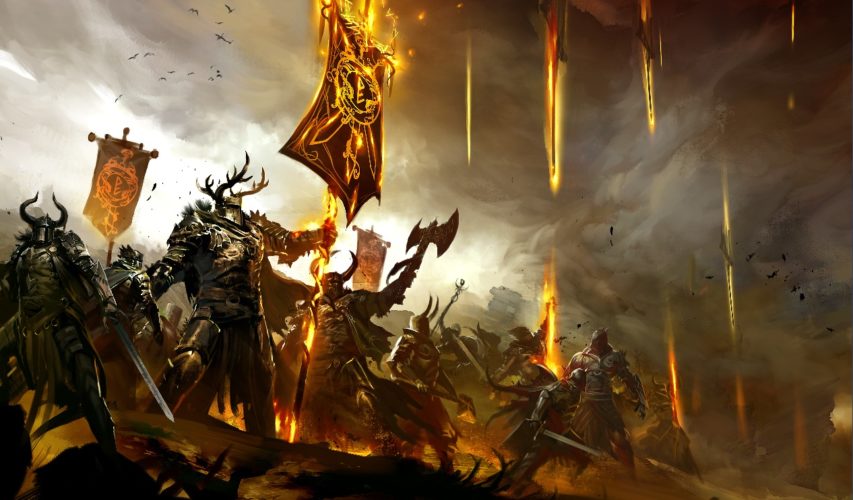
 Mainstream13 years ago
Mainstream13 years agoGuild Wars 2: The eSports Dream and the sPvP Tragedy
-

 Other2 years ago
Other2 years agoAjjubhai UID: Free Fire Details & Earnings

